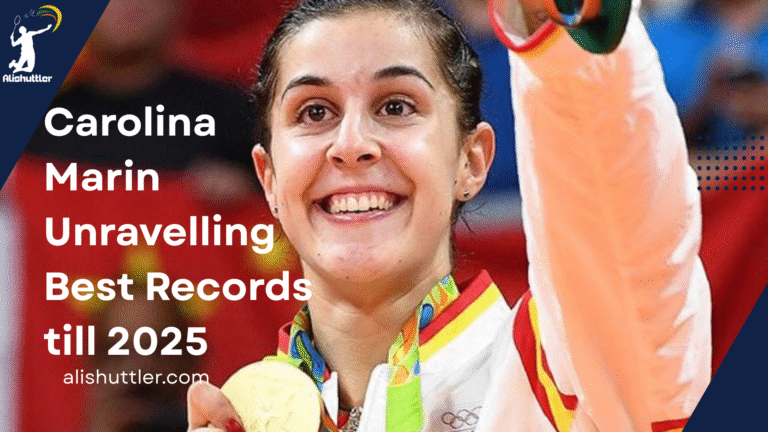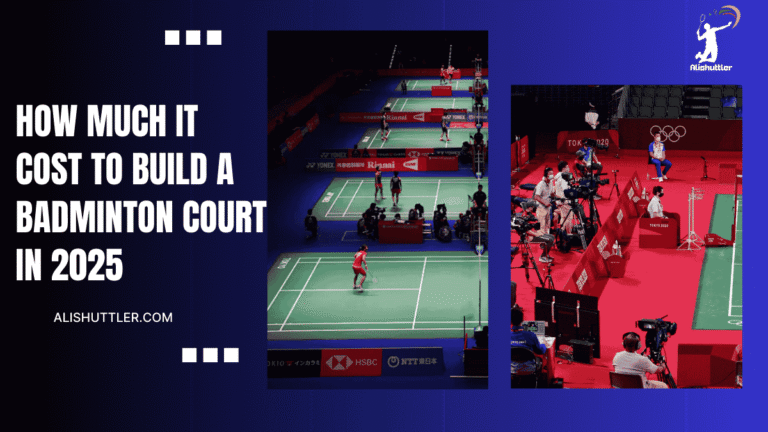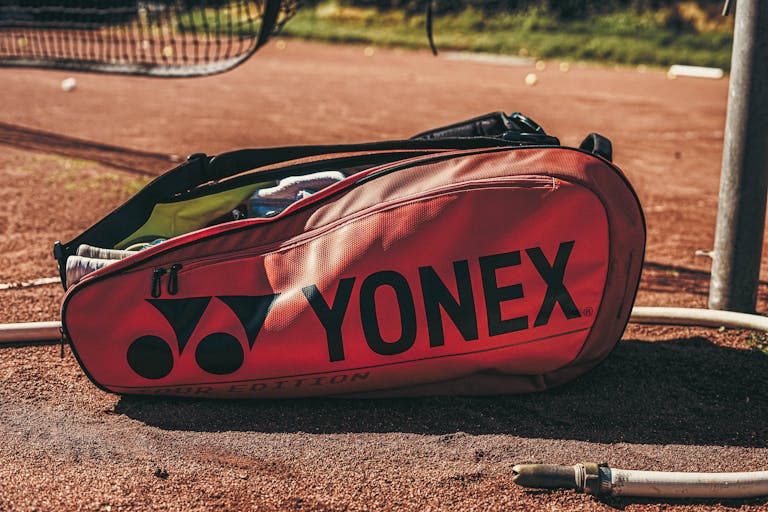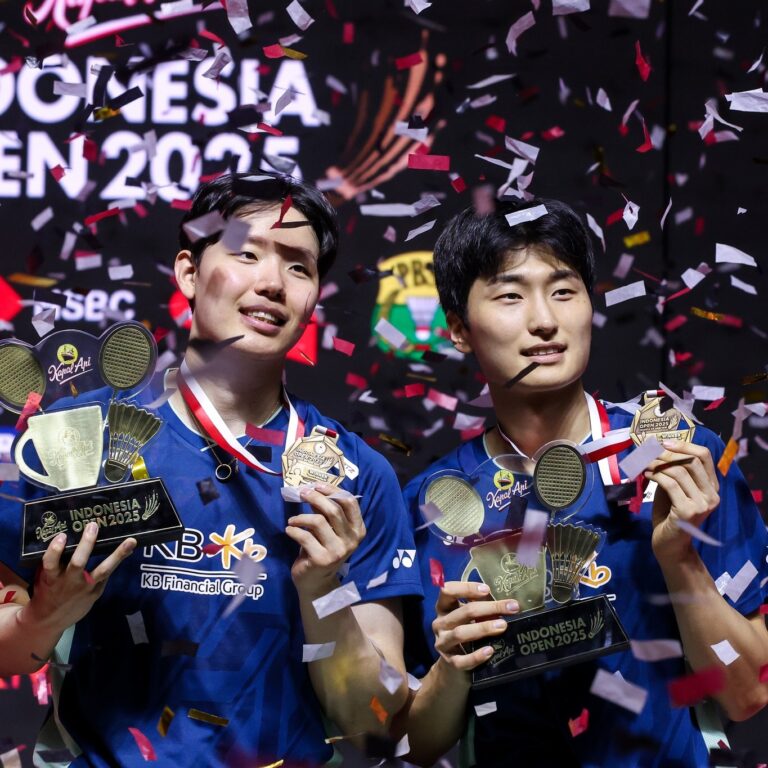Curious about the exciting world of Para Badminton? Imagine a sport that combines skill, agility, and determination. Picture athletes showcasing their talent on the court with unmatched intensity. How does this inclusive adaptation of badminton cater to individuals with physical impairments and different types? Join us as we delve into the dynamic realm of Para Badminton, where resilience meets sportsmanship in every smash-and-drop shot.
Table of Contents
Understanding Para Badminton Classifications
Different Types of Para-Badminton Classifications
Para badminton, a sport designed for athletes with physical impairments, utilizes various classifications to ensure fair competition. These classifications are based on the players’ specific physical impairments, grouping individuals with similar abilities together. For example, players with lower limb impairments may compete against each other in one classification group.
The Badminton World Federation (BWF) governs and recognizes the classification system in para badminton. This system guarantees that athletes are placed in categories where they can compete against others with comparable skills and limitations. By having these different types of classifications, para badminton provides a platform for all athletes to participate equitably.
Players in para badminton fall into distinct categories, allowing them to showcase their talents and skills while competing against others facing similar challenges. The classification process ensures that matches are competitive and engaging for both players and spectators alike.
Benefits of Para Badminton Classification System
- Ensures fair competition by grouping athletes with similar abilities.
- Allows athletes to compete on an equal playing field.
The classification system is essential as it creates a level playing field for all participants regardless of their physical impairments. It promotes inclusivity within the sport and enables individuals to excel based on their skills rather than being hindered by their disabilities.
- Athletes can focus on improving their game without worrying about unfair advantages.
- Spectators can appreciate the skill levels displayed during matches knowing that each player is appropriately classified.
How to Play Para Badminton
Similar Rules, Different Adaptations
Para badminton closely follows the rules of traditional badminton but makes adjustments for various impairments. For instance, players with mobility issues may compete in standing or wheelchair divisions. The game still involves hitting a shuttlecock back and forth over a net.
Players can have different levels of impairment, affecting their movement and coordination. In para badminton, these differences are taken into account to ensure fair play and equal opportunities for all participants. By modifying certain rules and equipment, individuals with disabilities can fully engage in the sport.
Equipment Adaptations for Accessibility
In para badminton, adapted equipment plays a crucial role in enabling players to participate effectively. Wheelchairs are commonly used by those competing in the wheelchair division to enhance mobility on the court. Modified rackets may be utilized by players who require specific adaptations due to their impairment.
Pros:
- Allows individuals with various impairments to enjoy playing badminton.
- Promotes inclusivity and diversity within the sport.
Cons:
- Limited availability of specialized equipment could be a barrier for some aspiring players.
- Adapting to using new equipment may require additional training and adjustment time.
History and Evolution of Para Badminton
Origin and Development
Para badminton emerged in the 1990s, offering individuals with disabilities a recreational outlet. The sport gained traction globally due to its inclusive nature, providing opportunities for players with various impairments. Organizations like the International Wheelchair and Amputee Sports Federation (IWAS) played a pivotal role in popularizing para badminton. Through their efforts, the sport received recognition and support on an international level.

Para badminton’s growth was further solidified when it was officially acknowledged as a competitive sport by the Badminton World Federation (BWF) in 2011. This milestone marked a significant turning point for para badminton, elevating its status from a recreational activity to a professional sporting discipline. As a result, more resources were allocated towards developing the infrastructure and promoting inclusivity within the sport.
Impact and Recognition
The recognition of para badminton by BWF opened doors for athletes with disabilities to showcase their skills on prestigious platforms worldwide. Tournaments such as the Paralympic Games now feature para badminton events, allowing players to compete at elite levels and gain global visibility. This increased exposure not only raises awareness about para badminton but also inspires individuals with disabilities to pursue their passion for sports.
Moreover, the inclusion of para badminton in major sporting events highlights the athleticism, determination, and skill of these exceptional athletes. It challenges stereotypes surrounding disability while emphasizing that talent knows no boundaries or limitations. By creating equal opportunities for all athletes regardless of physical abilities, para badminton promotes diversity and empowerment within the sports community.
Differences Between Badminton and Para Badminton
Court Dimensions
In para badminton, the court dimensions are identical to traditional badminton. The size of the court remains the same, ensuring fairness for all players.
Players in para badminton can enjoy a familiar playing field without any alterations. This consistency allows athletes to focus on their skills rather than adapting to new surroundings.
Rules for Wheelchair Movement
Para badminton introduces rules specifically addressing wheelchair movement during gameplay. These regulations ensure fair play and create a level playing field for all participants.
Players must adhere to these guidelines, which may differ from those in traditional badminton. Understanding these rules is crucial for players competing in para badminton tournaments.
Shots Played from Seated Position
One unique aspect of para badminton is the allowance of shots played from a seated position. Athletes with disabilities can execute various shots while seated, showcasing their agility and skill on the court.
This adaptation adds an extra layer of challenge and excitement to the game, highlighting the diverse abilities of para badminton players.
Inclusive Nature of Para Badminton Competitions
Welcoming Players with Various Disabilities
Para badminton competitions are open to players with a range of disabilities, such as physical impairments and visual impairments. This inclusivity allows individuals of different abilities to participate in the sport. For example, athletes with limb deficiencies or those who are visually impaired can engage in para badminton tournaments.
Players with physical limitations, amputations, or cerebral palsy find a welcoming environment in para badminton competitions. These events provide them with an opportunity to showcase their skills and compete at a high level despite their disabilities. The diverse range of participants adds richness and depth to the sport.
Emphasizing Diversity Through Mixed-Gender Events
One notable aspect of para badminton tournaments is the inclusion of mixed-gender events. By featuring mixed-gender matches, para badminton further underscores its commitment to diversity and inclusivity. Both male and female athletes can compete on equal footing, showcasing their talent regardless of gender.
The mixed-gender format not only promotes equality but also highlights the skill and ability of players irrespective of gender differences. It creates a level playing field where athletes can excel based on their capabilities rather than gender stereotypes or biases.
Impact of Para Badminton at the Paralympic Games
Global Awareness
Para badminton’s inclusion in the Tokyo 2020 Paralympic Games marked a significant milestone for the sport. The global stage provided by the Paralympics has helped raise awareness about para badminton on an international scale. This exposure has not only increased interest in the sport but also highlighted the talent and determination of para athletes to audiences worldwide.
- Pros:
- Increased visibility and recognition globally.
- Opportunities for para athletes to showcase their skills.
- Cons:
- Limited resources and funding compared to mainstream sports.
- Challenges in promoting inclusivity and participation at all levels.
Showcasing Skills
The platform of the Paralympic Games offers para badminton athletes a chance to display their remarkable abilities and athleticism. Through intense competition, these athletes demonstrate precision, agility, and strategic thinking that captivate spectators. The skill level exhibited by para badminton players not only challenges stereotypes about disability but also inspires individuals facing similar challenges.
- Key Points:
- Para badminton showcases diverse playing styles adapted to different impairments.
- Athletes’ determination and perseverance resonate with viewers beyond sports enthusiasts.
Notable Tournaments in the World of Para Badminton
Prestigious Tournaments
The BWF Para-Badminton World Championships stands out as one of the most esteemed events in para badminton. Athletes from around the globe compete fiercely to claim the title, showcasing exceptional skills and sportsmanship. This tournament serves as a platform for players to demonstrate their abilities on an international stage.
The Asian Para Games and European Para-Badminton Championships are also highly regarded competitions within the para badminton community. These events attract top-tier athletes who strive to push their limits and achieve excellence in their sport. Participants engage in thrilling matches, captivating audiences with their determination and passion for badminton.
Opportunities at National Level
National-level para badminton tournaments play a crucial role in nurturing talent and fostering growth within the sport. These competitions offer aspiring athletes a chance to hone their skills, gain valuable experience, and compete against peers at a similar level. By participating in national tournaments, players can qualify for higher-level events such as regional championships or even international competitions.
- Pros:
- Showcases talents internationally.
- Provides a platform for athletes to excel.
- Fosters growth and development within para badminton.
- Cons:
- Intense competition may be challenging.
- Requires dedication and hard work from athletes.
Inspirational Stories of Para Badminton Athletes

Overcoming Challenges
Para badminton athletes face various challenges, from physical limitations to societal barriers. Despite these obstacles, they exhibit remarkable determination and resilience. For instance, some athletes have visual impairments or mobility issues but have not let these challenges hinder their passion for the sport. These individuals showcase incredible strength and perseverance in pursuing their dreams of excelling in para badminton.
- Pros:
- Inspire others facing similar challenges
- Demonstrate the power of perseverance
Role Models for Others
The achievements of para badminton athletes go beyond winning matches; they serve as role models for people with disabilities worldwide. Through their success stories, these athletes inspire countless individuals to pursue their passions and overcome adversity. Their dedication and accomplishments show that with hard work and determination, anyone can achieve greatness regardless of any limitations they may face.
- Key Information:
- Para badminton athletes inspire others with disabilities.
- They encourage individuals to reach their full potential.
Impact on the Community
Para badminton athletes play a crucial role in advocating for inclusivity and breaking stereotypes surrounding disabilities. By showcasing their skills on a global stage, these athletes challenge misconceptions about what people with disabilities can achieve. Their presence in tournaments not only raises awareness about para sports but also promotes diversity and equality within the sporting community.
- Steps to Achieve Success:
- Set goals despite challenges.
- Stay dedicated to training.
- Seek support from coaches and peers.
- Examples of Resilience:
- A para badminton player who lost a limb but continued competing.
- An athlete who faced discrimination but persevered to become a champion.
Advancements in Wheelchair Division in Para Badminton
Technology and Equipment
Advancements in para badminton have significantly impacted the wheelchair division. Specialized wheelchairs designed for para badminton players are now lighter and easier to maneuver. These innovative wheelchairs enhance players’ mobility on the court, allowing them to swiftly navigate and respond during intense matches. For instance, lightweight frames enable quicker reactions, crucial for returning fast shots.
Research and development efforts continue to push boundaries in enhancing wheelchair design for para badminton. Ongoing studies focus on improving materials used in constructing wheelchairs that offer durability without compromising agility. Furthermore, advancements aim at tailoring features specifically for the unique demands of para badminton, ensuring players have optimal support while playing at their best.
Performance Enhancement
The evolution of technology has revolutionized the equipment utilized by athletes competing in para badminton, especially within the wheelchair division. These advancements not only improve performance but also contribute to creating a more inclusive and competitive environment for all players involved. Enhanced equipment allows athletes with different abilities to showcase their skills effectively on an equal footing.
- Pros:
- Improved mobility on the court
- Tailored features enhancing player comfort
- Cons:
- Cost implications may limit accessibility
Summary of what is para badminton.
You’ve now dived deep into the world of Para-Badminton, understanding its classifications, gameplay, history, and impact. The differences from traditional badminton, the inclusive competitions, and the inspiring stories of athletes have showcased the resilience and skill within this sport. The advancements in the wheelchair division have opened up new possibilities and avenues for athletes to excel.

As you reflect on these insights, remember that Para Badminton is not just a sport; it’s a testament to human spirit and determination. The next time you watch a Para Badminton match or hear about an athlete’s journey, appreciate the dedication and passion that drive them to overcome challenges and achieve greatness.
Frequently Asked Questions
What are the classifications in Para Badminton?
In Para Badminton, players are classified based on their impairment types and severity to ensure fair competition. The classifications include physical impairments (WH1-WH2), standing lower limb impairments (SL3-SL4), and short stature impairments (SU5).
How does Para Badminton differ from traditional badminton?
Para Badminton is adapted to accommodate various impairments, using modified rules and court dimensions. Players compete based on their classification while maintaining the essence of traditional badminton techniques like smashes, drops, and clears.
Why is Para Badminton considered inclusive?
Para Badminton promotes inclusivity by providing opportunities for athletes with different disabilities to participate at various levels of competition. It fosters a supportive environment where individuals can showcase their skills regardless of their impairment type or severity.
What impact has Para Badminton had on the Paralympic Games?
The inclusion of Para Badminton in the Paralympic Games has expanded opportunities for para-athletes globally. It showcases exceptional talent, dedication, and sportsmanship while increasing awareness about adaptive sports among audiences worldwide.
How have advancements in wheelchair division enhanced Para Badminton?
Advancements in wheelchair technology have improved mobility and performance for athletes competing in the wheelchair division of Para Badminton. These innovations enable players to maneuver efficiently on the court, enhancing their overall playing experience and skill development.






